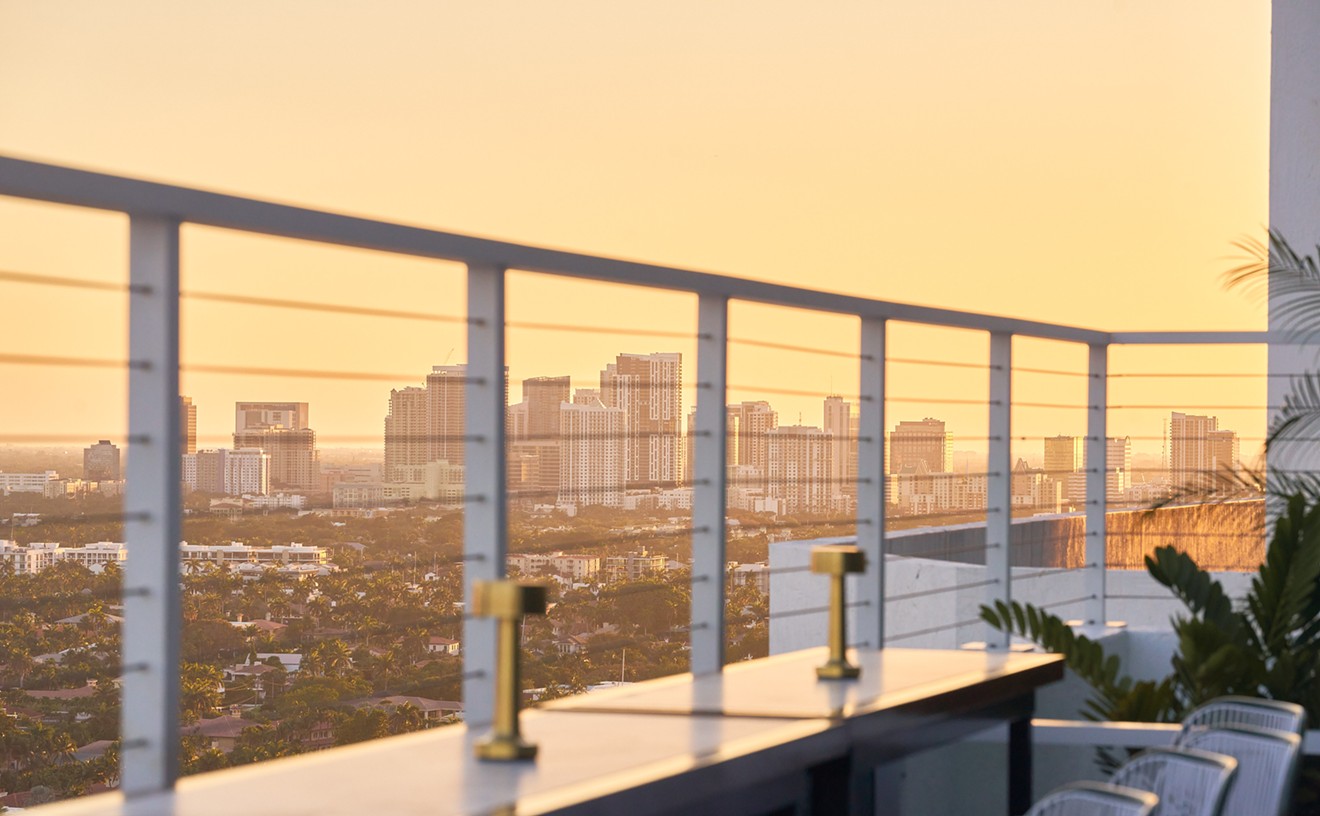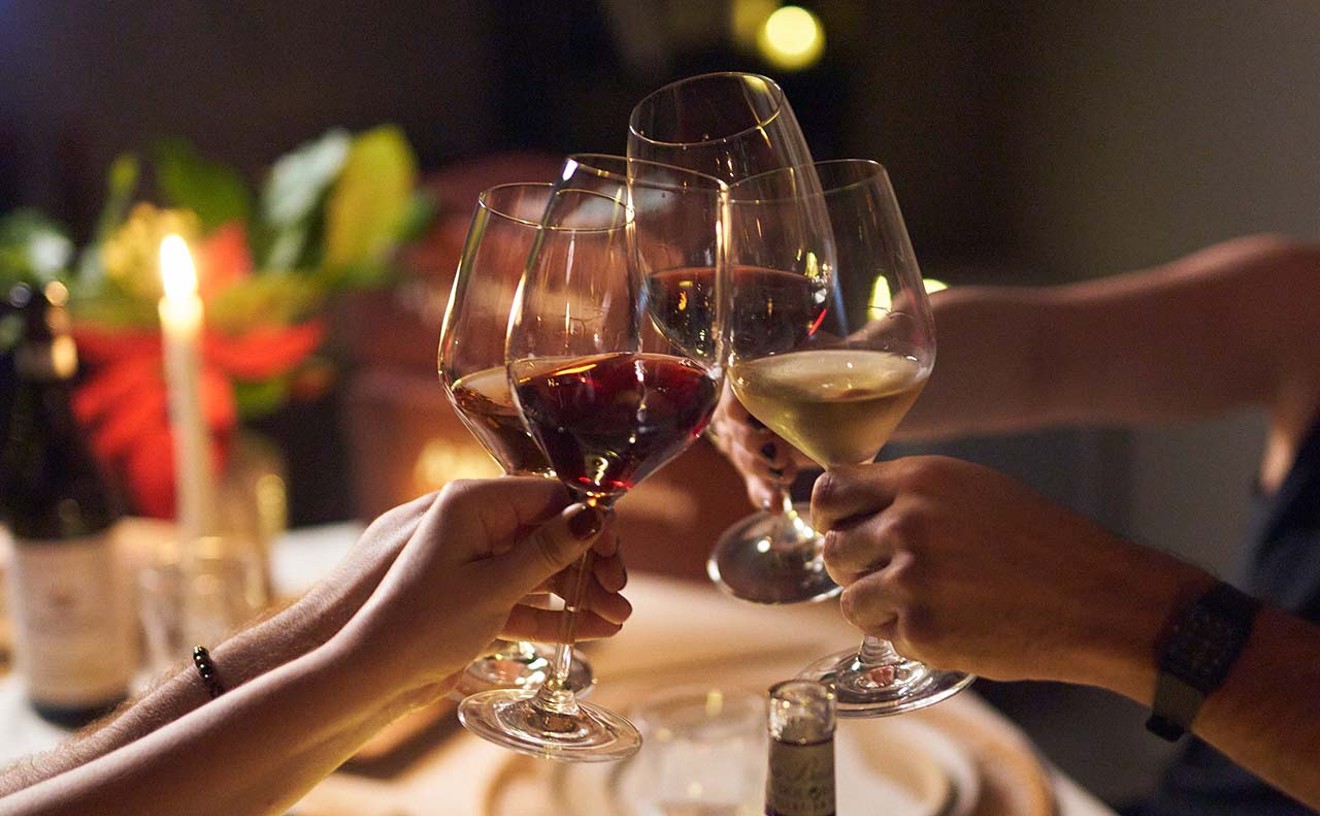The menu at North Miami's two-month-old An American Place Waterside Restaurant contains a quote from the late food deity James Beard, friend and mentor of the restaurant's proprietor Larry Forgione: "The truth is, one must be inspired to cook." Indeed, the best chefs are not those who merely know what seasonings blend well. Great chefs are instinctive visionaries, teachers. They don't follow recipes, they write them. They initiate trends in food, they introduce the dining public to new tastes and habits. And they tutor proteges, a talented few of whom might wind up passing along something to the next generation of hopefuls.
You wouldn't know it if you weren't looking for it, but North Dade is home to a fair measure of this rare talent. Chef-owners Mark Militello and Allen Susser, for instance, who have helped place South Florida's New World cuisine on America's culinary map. By now we've become so familiar with these men and their styles that we know almost too well what to expect from their kitchens: rich fare, delicious but at times overwhelming in its complexity. In fact, it's hard work just ordering from their menus, translating the dense culinaryspeak into decipherable English. Which brings us to another Zen-like truth, one Beard neglected to mention: Sometimes one must be inspired to eat. Without diners, there are no great chefs.
Honored in 1993 by the James Beard Foundation as Chef of the Year, Larry Forgione is unarguably one of the notables. He first gained critical attention in the 1979 at the River Cafe, a New York City stomping ground for young and restless chefs. There he instituted a policy that at the time seemed both shocking and foolhardy for an upscale American eatery: Everything was to be cooked with fresh, American ingredients. Nothing frozen, nothing canned. Nothing imported from Europe. Forgione called it American cuisine. And the ingredients weren't the only "American" thing about it; Forgione took himself and his patrons back to basic, simple American cooking traditions, ones that had long been forgotten or abandoned in this nation's pervasive culinary Paris-envy. These days we take Forgione's contributions for granted, but in culinary circles he is one of the few who are credited with revamping the U.S. restaurant industry.
In 1983 Forgione opened An American Place on Manhattan's Upper East Side (it has since relocated to posh Park Avenue). In 1991 he also took over the nation's oldest tavern, the Beekman Arms, situated in New York's verdant Hudson Valley. And in January he opened his third restaurant, in the Jockey Club on Biscayne Boulevard. To run this latest venture, he brought along executive chef Melissa Kelly, who has worked with Forgione for the past five years since graduating first in her class from the Culinary Institute of America. Together they have devised a downhome menu, albeit one that is still being fine-tuned and that ranges a bit farther afield than one might expect from such a purely "American" sage (dolphin is labeled mahi-mahi, for example, and offered escabeche-style).
With this appealing simplicity comes a bonus: renewed inspiration to dine, and to dine well. An American Place is one of the few restaurants I can visit when I'm not hungry and still manage to consume a three-course meal. Not that one has to A what used to be the Jockey Club's private dining room is now a spacious, 350-seat restaurant in-the-round, plus a casual lounge, a dockside bar, and a banquet room. A curious mixture of dignified elegance (a carpet that rivals the amply arrayed plants for greenery); stuffy exclusivity (a word to the guard at the gate on Biscayne lets you through); riveting architecture (a stunning trompe l'oeil ceiling, the dome all palm fronds and terra cotta rooftops); joie de vivre (china imprinted with seashells and sailboats); and lounge-lizard entertainment (an untalented vocalist completely at odds with the atmosphere) allows you to order a dense devil's-food cake for dinner if you so desire, as I noticed one patron doing, without a single staff member lifting a well-trained eyebrow.
The menu accommodates economy with a choice of four wood-oven pizzas, upgrades with Florida-fresh snapper, shrimp, and lobster, and goes unabashedly first-class with roast rack of lamb, grilled veal chop, and prime New York sirloin steak. No matter which way you opt to travel, at An American Place, you will surely fly.
Oysters, baked on a bed of sleek creamed spinach and topped with bread crumbs and a rich champagne-chive sauce, are priced at a rather steep $2.25 each, but the excellent preparation, served a la raw bar on rock salt (not to mention the novelty of being able to order just one), makes it a worthwhile appetite teaser.
Steamed white-water clams in a savory broth compose another, more delicate way to begin a meal. Grilled fennel sharpened the flavor of the clams without overwhelming them, while roasted garlic added a lingering nutty taste. Also notable was a rock shrimp gumbo (one of the few nonregional menu entries) that was offered as a special one evening, a huge bowlful of tightly curled shrimp mixed with okra and risotto in a spicy stock. Hearts of romaine salad is another attractive option, a layout of individual leaves topped by sliced fresh hearts of palm and a mildly pungent mustard vinaigrette. Seared yellowfin tuna carpaccio also comes with a salad, this one of deep-fried tobacco onion slices. Though the carpaccio, dressed in a pure chili oil, was paper-thin perfection, the onions detracted from it, too heavy and flavorless to be tolerated by the tuna.
What is rapidly becoming a signature dish, the crisp Florida lobster cake and avocado "sandwich" on a chunky tomato relish, is a beautiful presentation. Sliced like a hamburger bun, the lobster cake enclosed a buttery-ripe, coarse-cut layer of avocado. A smart accompaniment, the relish was slightly smoky, slightly sweet, enhanced by diced red peppers. Baby field greens beribboned the edges of the plate.
The entrees, sparingly described, exceeded our every expectation. Grilled Florida shrimp proved to be eight sweet jumbos, spiced and grilled to just the right amount of resistance, served around a scoop of black-bean yellow rice, which was saved from dryness by a tangy-smooth banana salsa and a shrimp jus. Wood-roasted Florida snapper was a superbly prepared fillet, accented with rock shrimp and sweet corn and served over sticky-rice risotto. A roasted shrimp sauce, similar to the jus, complemented the dish, the starch from the rice adding a creamy texture.
Crisp roasted free-range duck is another of Forgione's stamps. Many Americans believe the trend toward free-range poultry arose from a humanitarian point of view. Not exactly. The restaurant industry credits Forgione, who went to London and returned with a firm belief in the superiority of unpenned birds, which not only grow bigger but taste better. When he discovered to his horror that Long Island ducklings were only available frozen, he began having free-range duck delivered freshly killed. The bird we were served was delicious, honey-brushed and garnished with dried figs, sitting atop a flavorful bacon-and-sage orzo pilaf. Free-range chicken is also a specialty, served with island-style cassava fries and garlic spinach.
Lobster ravioli were so outstanding we tried them twice. Far from your standard two-inch pillows, these were two very large triangles, plump with lobster-tail meat, shredded shiitake and chanterelle mushrooms, and a hint of fennel and cream, floating with tomato "jewels" and crunchy baby string beans in an assertive roasted lobster broth.
Sweets at An American Place are even more quintessentially red-white-and-blue than the fairly inclusive, all-American wine list. We sampled a pleasant Beringer port with our bourbon pecan pie, forgoing the berry shortcake and the aforementioned devil's-food. Surprisingly, the pie was mostly fudge, like a flourless chocolate cake, with a few pecans dotting the underside and vanilla ice cream and whipped cream garnishing the top. Though it was delicious, I was disappointed by the scarcity of nuts. Still, as a conclusion to a very fine (and finely served) meal, it was a motivational piece of work, renewing my faith in Miami's fine dining. Certainly it inspired in me the desire to return.










